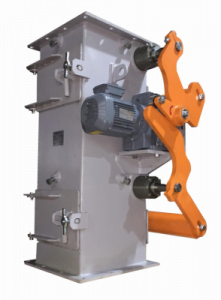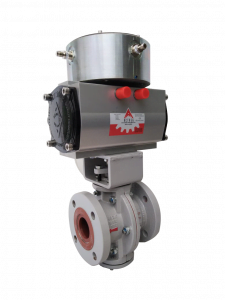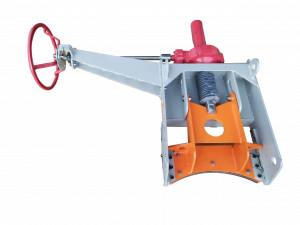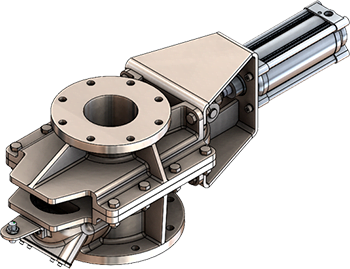The quality of the air we breathe directly affects our comfort, health and quality of life. This happens because high levels of pollutants can trigger respiratory, circulatory and neurological diseases, or make them more severe. This is the conclusion of a study carried out by the Medical School of the University of São Paulo (FMUSP), which assessed the effects of air pollution on the health of people in the state capital, the city of São Paulo.
The researchers collected pollution data measured by the pollutant monitoring stations of the state’s environment company CETESB (Companhia de Tecnologia e Saneamento Ambiental de São Paulo, in Portuguese) and in the city’s emergency rooms. They then related the pollution indicators to the number of hospitalizations and deaths from respiratory problems. According to Paulo Hilário Saldiva, head of FMUSP’s Air Pollution Department and project coordinator, the air in the city of São Paulo receives around 3 million tons of pollutants every year.
The main pollutant released into the atmosphere is carbon monoxide. Over 1.9 million tonnes of this gas are emitted annually. Other significant pollutants are hydrocarbons (430,000 tons per year), nitrogen oxide (450,000 tons), sulphur oxide (130,000 tons) and particulate material (95 tons). In the city of São Paulo, 90% of the pollutants are emitted by automotive vehicles. The industries are responsible for the emission of inhalable particles and sulphur dioxide mostly.
Effects of pollution on our health
One of the studies conducted by the researchers to monitor the effects of air pollution consisted in placing healthy mice in highly polluted areas of São Paulo and analysing the evolution of the effects of pollution on the animals’ health. After three months, the researchers observed that the animals had congested noses, one of the first symptoms of rhinitis. They also developed asthma and their lung defences were reduced. Apart from that, the risk of developing cancer was 2.5 times higher than normal.
This happens because most air pollutants cause contraction of the respiratory tract muscles, making the airways narrower, causing the mucociliary escalator to stop functioning properly and reducing the body’s capacity to filter the air inhaled. As a consequence, pulmonary function is reduced, whereas the occurrence of coughs, difficulty breathing, respiratory infections, cardiovascular diseases, lung cancer and even strokes becomes higher.
Children and seniors
Air pollution is particularly harmful to children and seniors, and this is the reason why Paulo Saldiva observes the relationship between air pollution and death rates by respiratory disease in those age groups. The research identified increases in death rates of up to 12% in people aged 65 or more, on days of high concentration of air pollutants in the atmosphere that are more common in winter. The research also pointed to an increase of 25% in the search for emergency child care following days of high concentration of pollutants in the air. The number of respiratory-related hospitalisations is up to 15% higher in Brazil’s public health care system (SUS or Sistema Único de Saúde) during winter. This rate reaches 20% at the FMUSP’s Child Institute.
COVID-19
Studies carried out around the world reveal that air pollution renders COVID-19 even more lethal. Since it is a new disease, many more studies need to be conducted, but data show inhalation of ultrafine particles considerably increases the probability of death from the new coronavirus. To come to that conclusion, researchers at the T. H. Chan Public Health School of Harvard analysed data on the level of ultrafine particles in the atmosphere and the number of deaths by COVID-19 in around 3,000 cities in the United States, comprising 98% of the country’s population.
During the research, the cities that had, on average, only one more microgram per cubic metre of fine particles in the air had a COVID-related death rate up to 15% higher. This is because these particles penetrate deeply into the body, weakening the immune system, increasing inflammation in the lungs and respiratory tract and also the risk of developing severe symptoms after contracting COVID-19.
How to protect yourself from air pollution?
- Wear your PPE. If you work in the industry, make sure you wear all the personal protective equipment recommended for your activity.
- Maintain your equipment. Without proper maintenance, industrial equipment operates less efficiently and the seal is impaired, and they emit more pollutants.
- Rethink your vehicle’s fuel. Burning fossil fuel emits more pollutants than other types of fuel. Hence, whenever possible, opt for ethanol or biodiesel.
- Avoid places of intense vehicle traffic. Give priority to shops and services further away from central areas or close to green areas.
- Understand the hours of highest and lowest pollution. Rush hours, such as early morning and late afternoon are the ones with the highest incidence of pollution. Plan your activities to avoid places with intense traffic at these times.
- Do not burn biomass in closed areas. Burning biomass is an important source of particulate matter. For that reason, charcoal grills, wood stoves or barbecues should always be lit in open, well-ventilated spaces.
- Avoid being indoors with smokers. In addition to being harmful to the health of smokers, cigarettes are a major source of indoor air pollution.
- Be physically active. Even taking air pollution into account, exercise brings more benefits than harm to your health. If you can, avoid places with heavy traffic and prefer tree-filled environments.
- Preserve green areas. Green areas have a direct impact on the control of pollution, air temperature and humidity. If you have enough space, consider planting a tree in your house. If not, consult your neighbourhood association or your city hall to get information on local legislation for planting and preserving trees in public places.
Find out more
Get to know more about the effects of air pollution on your body with a video produced by the BreatheLife campaign. This campaign is organised in partnership with the World Health Organization (WHO), UN Environment and the World Bank and is aimed at reducing the impact of air pollution on health and climate.
References
https://revistapesquisa.fapesp.br/a-poluicao-causa-doencas-e-mata/





